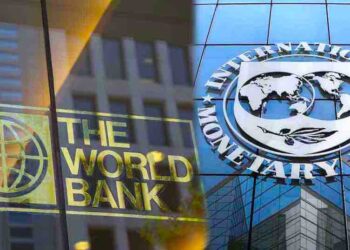Nestle’s margins continued to shrink in the six months ending June 2022 in a performance that looked like a carryover from the 2021 full year where revenues where good but revenues shrank after a god performance.
In the second half of the new financial year, Nestle, one of the better performers among stocks with over a trillion naira capitalization (SWOOT), hit revenue of N222.5 billion, which is 30 per cent better than what was hauled in in the equivalent period in 2021, at N171.44 billion.
To achieve this level of sales, the FMCG had to spend a sizable N142.25 billion in the period or 34.5 per cent more than the N105 billion spent in the equivalent period. This big spend, however, did not quite restrict the rise in top line profit, which shored to N80.2 billion from N66.4 billion or 20.7 per cent.
But that rise couldn’t stop gross profit margin or the sales efficiency measure of the FMCG from dropping a few notches to 36.1 per cent from 38.7 per cent. It means something needs to give on the company’s go to market strategy either by pushing up revenue better or cut down on the cost of goods sold COGS.
The direct consequence of improved gross profit was that the company’s operating profit gained by 27.1 per cent to N46.18 billion from N36.3 billion. But the rise was not enough to positively affect the operating efficiency of the makers of Milo and Nescafe as operating profit margin backtracked to 20.8 per cent from 21.2 per cent. It means the company must cut down on cost despite the inflationary environment.
Nestle was able to improve pretax profits, raisin it up by 31 per cent to N43.7 billion from N33.4 billion to show its ability to manage interest income and expenses. This was further shown in the rise in pretax profit margin to 19.7 per cent from 19.5 per cent. This improvement had an impact on bottom line as net profit jumped by more than a quarter or 27.7 per cent to N27.7 billion from N21.7 billion with a resultant net profit margin of 12.5 per cent, down from 12.7 per cent.
As noted earlier, the drops in margin despite improving top line and bottom line profits seems like a carryover from the previous financial year. In that year, ending December 31, 2021, Nestle expanded revenue by 22.5 per cent to N351.82 billion from N287.1 billion to suggest improvement in sales and propensity to consume by consumers.
To make that level of sales, Nestle allowed costs of sale (COGS) to shoot up 31 per cent to N220 billion from N287.1 billion. Rising COGS is concomitant to rising sales but may also be due to the rising inflation now at 16.17 per cent as of January.
Rising COGS restricted Nestle’s top line profit to 10.6 per cent, from N119.2 billion to N131.84 billion. That setback led to the first backslides in margins as gross profit margin fell to 37.5 per cent from 41.5 per cent. This means the company known for Nescafe and Milo couldn’t convert as much sales to top line profit as it used to do because the cost of selling products is rising. It also means that the company would need to work on its sales strategy to ameliorate or temper the situation.
But Nestle’s operating result was up in the period by 11.5 per cent to N71.97 billion from N64.42 billion in the period. This should be good news but considering that operating profit margin was down to 20.5 per cent from 22.4 per cent, it is not quite good news because falling operating margin means the company needs to get a hang of operating efficiencies. This would mean having better control of operating costs including marketing and distribution expenses that rose by almost 10 per cent and admin expenses that grew 7.5 per cent. Although the rise in operating cost look small, they need to be cut further so that operating profits can take a flight.
While Nestle struggled with costs, it faced yet another setback in the form of rising net finance costs, which grew by 167 per cent to N10.1 billion from N3.8 billion. What this suggests is a rise in leverage (rising borrowing) or a company that is highly geared. The net effect of debt in the company’s financial structure is a miserly growth in pretax profit.
Pretax profit inched by a mere 2.04 per cent to N61.9 billion from N60.6 billion. The slow growth further eroded pretax profit margin, as it shrank to 17.6 per cent from 21.12 per cent. Net profit had no further to grow beyond 2.1 per cent after tax because of this. Net profit margin shrank as a result to 11.14 per cent from 13.7 per cent.





